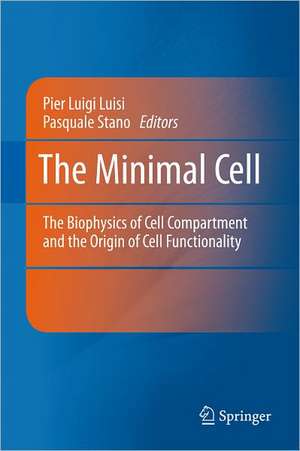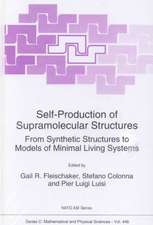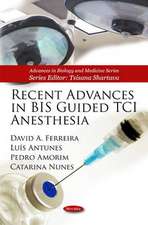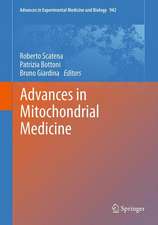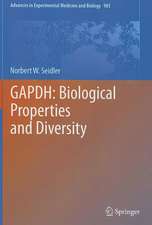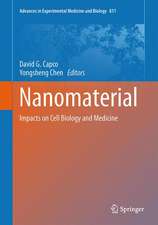The Minimal Cell: The Biophysics of Cell Compartment and the Origin of Cell Functionality
Editat de Pier Luigi Luisi, Pasquale Stanoen Limba Engleză Hardback – 3 noi 2010
| Toate formatele și edițiile | Preț | Express |
|---|---|---|
| Paperback (1) | 1094.97 lei 6-8 săpt. | |
| SPRINGER NETHERLANDS – 25 noi 2014 | 1094.97 lei 6-8 săpt. | |
| Hardback (1) | 1100.30 lei 6-8 săpt. | |
| SPRINGER NETHERLANDS – 3 noi 2010 | 1100.30 lei 6-8 săpt. |
Preț: 1100.30 lei
Preț vechi: 1158.20 lei
-5% Nou
Puncte Express: 1650
Preț estimativ în valută:
210.55€ • 225.14$ • 175.55£
210.55€ • 225.14$ • 175.55£
Carte tipărită la comandă
Livrare economică 17 aprilie-01 mai
Preluare comenzi: 021 569.72.76
Specificații
ISBN-13: 9789048199433
ISBN-10: 9048199433
Pagini: 308
Ilustrații: X, 298 p.
Dimensiuni: 155 x 235 x 25 mm
Greutate: 0.57 kg
Ediția:2011
Editura: SPRINGER NETHERLANDS
Colecția Springer
Locul publicării:Dordrecht, Netherlands
ISBN-10: 9048199433
Pagini: 308
Ilustrații: X, 298 p.
Dimensiuni: 155 x 235 x 25 mm
Greutate: 0.57 kg
Ediția:2011
Editura: SPRINGER NETHERLANDS
Colecția Springer
Locul publicării:Dordrecht, Netherlands
Public țintă
ResearchCuprins
Foreword, Pier Luigi Luisi.- Part I The Physical Aspects: 1 Towards a minimal cytoplasm, Jacqueline D. Keighron and Christine D. Keating.- 2 Evolution of the cell’s mechanical design, David Boal and Cameron Forde.- 3 On the minimal requirements for the emergence of cellular crowding, Luis Acerenza and Martín Graña.- 4 How small is small? A biophysical chemists thoughts about the lower limits of cell sizes, Peter B. Moore.- 5 Biochemical reactions in the crowded and confined physiological environment: Physical chemistry meets synthetic biology, Allen P. Minton and Germán Rivas-Caballero.- Part II Steps towards Functionality: 6 The influence of environment and metabolic capacity on the size of a microorganism, W. Andrew Lancaster and Michael W. W. Adams.- 7 The minimal cell and life’s origin: Role of water and aqueous interfaces, Gerald H. Pollack, Xavier Figueroa and Qing Zhao.- 8 Membrane self-assembly processes: Steps towards the first cellular life, Pierre-Alain Monnard and David W. Deamer.- 9 Approaches to building chemical cells/chells: Examples of relevant mechanistic ‘couples’, Paul M. Gardner and Benjamin G. Davis.- Part III Steps towards Minimal Life: 10 Construction of an in vitro model of a living cellular system, Kenichi Yoshikawa, Shin-ichiro M. Nomura, Kanta Tsumoto, Kingo Takiguchi.- 11 New and unexpected insights on the formation of protocells from a synthetic biology approach: The case of entrapment of biomacromolecules and protein synthesis inside vesicles, Pasquale Stano, Tereza Pereira de Souza, Matteo Allegretti, Yutetsu Kuruma, Pier Luigi Luisi.- 12 Liposomes mediated synthesis of membrane proteins, Yutetsu Kuruma.- 13 Giant unilamellar vesicles: From minimal membrane systems to minimal cells?, Petra Schwille.- 14 Theoretical approaches to ribocell modeling, Fabio Mavelli.- 15 Evolvability and self-replication of genetic information in liposomes, Tetsuya Yomo, Tomoaki Matsuura, Norikazu Ichihashi, TakeshiSunami, Hiroshi Kita, Hiroaki Suzuki.- Index.
Textul de pe ultima copertă
In the last ten years there has been a considerable increase of interest on the notion of the minimal cell. With this term we usually mean a cell-like structure containing the minimal and sufficient number of components to be defined as alive, or at least capable of displaying some of the fundamental functions of a living cell. In fact, when we look at extant living cells we realize that thousands of molecules are organized spatially and functionally in order to realize what we call cellular life. This fact elicits the question whether such huge complexity is a necessary condition for life, or a simpler molecular system can also be defined as alive. Obviously, the concept of minimal cell encompasses entire families of cells, from totally synthetic cells, to semi-synthetic ones, to primitive cell models, to simple biomimetic cellular systems. Typically, in the experimental approach to the construction of minimal the main ingredient is the compartment. Lipid vesicles (liposomes) are used to host simple and complex molecular transformations, from single or multiple enzymic reactions, to polymerase chain reactions, to gene expression. Today this research is seen as part of the broader scenario of synthetic biology but it is rooted in origins of life studies, because the construction of a minimal cell might provide biophysical insights into the origins of primitive cells, and the emergence of life on earth. The volume provides an overview of physical, biochemical and functional studies on minimal cells, with emphasis to experimental approaches. 15 International experts report on their innovative contributions to the construction of minimal cells.
Caracteristici
It gives an up-to-date view of experimental research on the construction of advanced cell models based on liposomes Biophysical, biochemical, genetic and computational approaches are presented One of the most intriguing and challenging aspects of the emerging synthetic biology Includes supplementary material: sn.pub/extras
